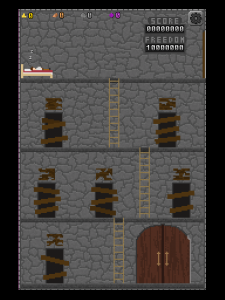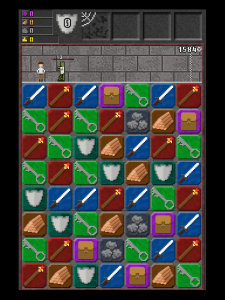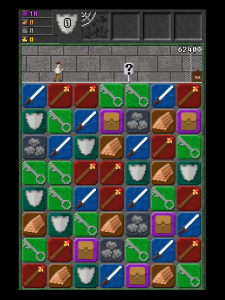10000000: A Brief Usability Review
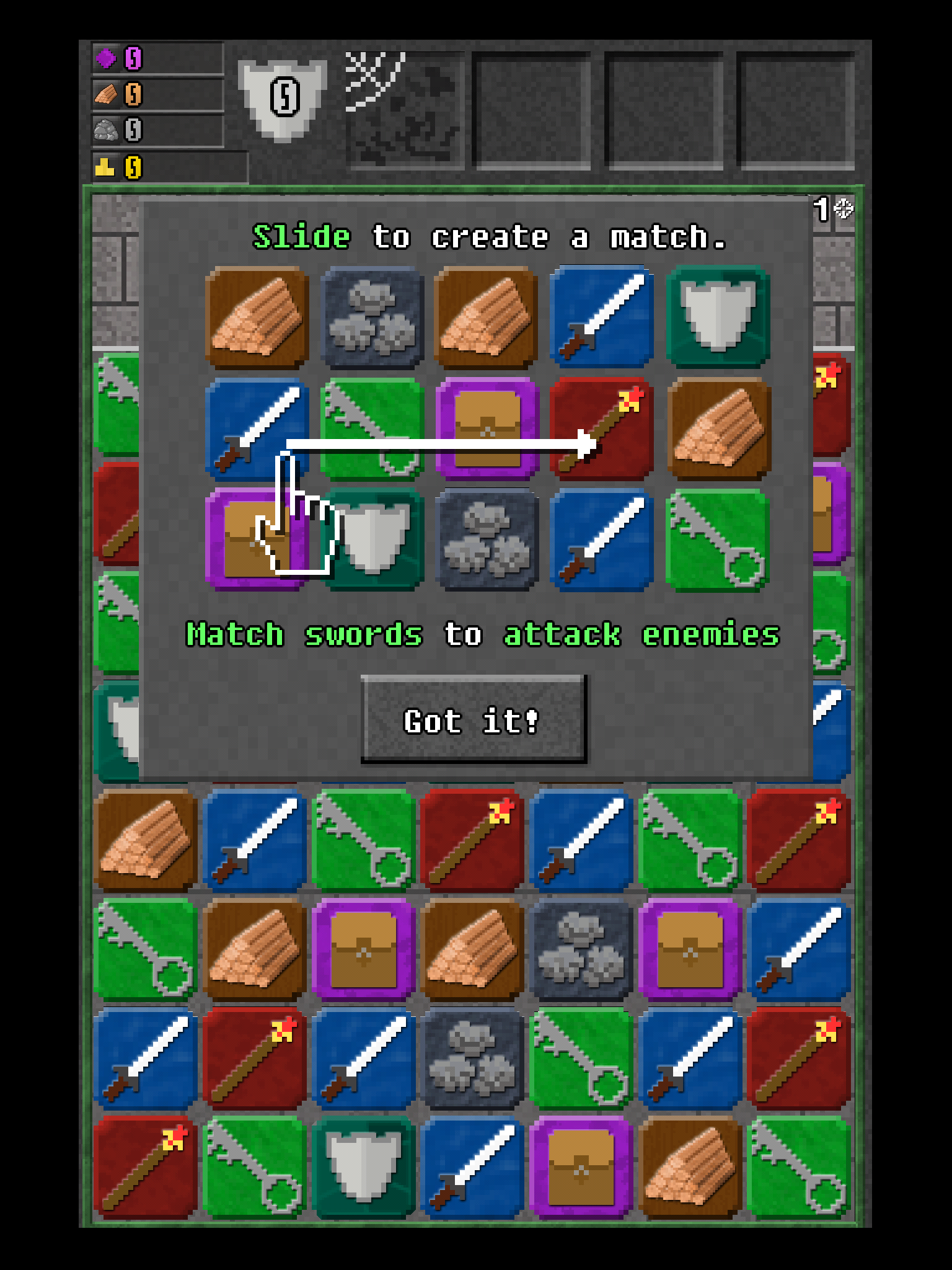
10000000 for iOS (by EightyEight Games) is an awkwardly-named (iTunes link) “Dungeon Crawling RPG Matching Game”. Yep, it’s a match-three tile matching game built into an RPG. And despite the odd mashup of genre and strictly numeric title, it’s actually quite good.
Here’s how it works: you control a hero who’s forever running to the right. Occasionally your hero is stopped by an obstacle - a monster, a chest, or maybe a door - and you need to match key, sword, and magic stave tiles to help defeat said obstacle. When you’re not slaying monsters and running exclusively to the right, you can also use some other resources that you’ve gathered like wood and stone to upgrade your weapon, armor, and a variety of other perks.
With those basics out of the way, I’ve got four usability related topics to discuss:
- Main Menus are for Suckers
- Your Hidden Health Bar
- Armored What?
- Sometimes, Load Times are Good…
Main Menus are for Suckers
Being a simple iOS title, 10000000 can afford to not have a main menu (unlike the epic intro screens of the massively more complicated Magic 2013). While it’s not as fast to get off the ground as the one tap required in Jetpack Joyride, the player isn’t ever subjected to a needless menu to get things started. Especially in the mobile context, letting players get in and out of the game as fast as possible is always appreciated.
If I had to pick a proverbial nit here, technically there is one more tap that could be eliminated. As the screenshot on the right shows, your hero starts out taking a nap in the castle. Tapping on the screen once wakes your hero up, and another tap on a room sets him on the move to that location. Why can’t he just hop out of bed and go right to the location? I’m not sure what benefit the extra tap brings, other than delay the player by a tiny amount.
Your Hidden Health Bar

Despite the RPG nature of the game, your hero doesn’t have a traditional health bar. The only “life currency” in this game is time, and it’s represented by your hero’s horizontal position on the screen. As the screenshot here indicates, time is gained by killing monsters and opening chests, and is lost by standing still.
It’s a great system, although it confused me for a while - apparently I missed this tutorial screen the first time through, and I was looking everywhere for some kind of number that represented my health. Thankfully, I was wrong, because this works way better. The game is quite hectic, because the player always needs to be concentrating on matching something, and there’s never a good time to look up and see how much health your hero has left.
Another nice touch is the border that’s around the screen. When running forward (gaining time) it turns green, and when stopped, it turns red. It’s a subtle queue that helps the player recognize what’s going on in the endless hallway.
Note the red border, indicating that your hero is losing time
Note the green border, indicating that your hero is gaining time
Armored What?
Another layer of strategy in 10000000 is figuring out what kind of attack to use based on the enemy that your hero is currently slaying. When fighting armored enemies, it’s more effective to use magic attacks, and non-armored enemies will take more damage from physical attacks. This is pretty intuitive, right? Sure it is.
But exactly which enemies count as armored? The pixel art in this game is just that, pixel art, so it’s basically impossible to tell by for sure by looking at the enemies. Here’s a screen that shows the monsters coming up in your next run:
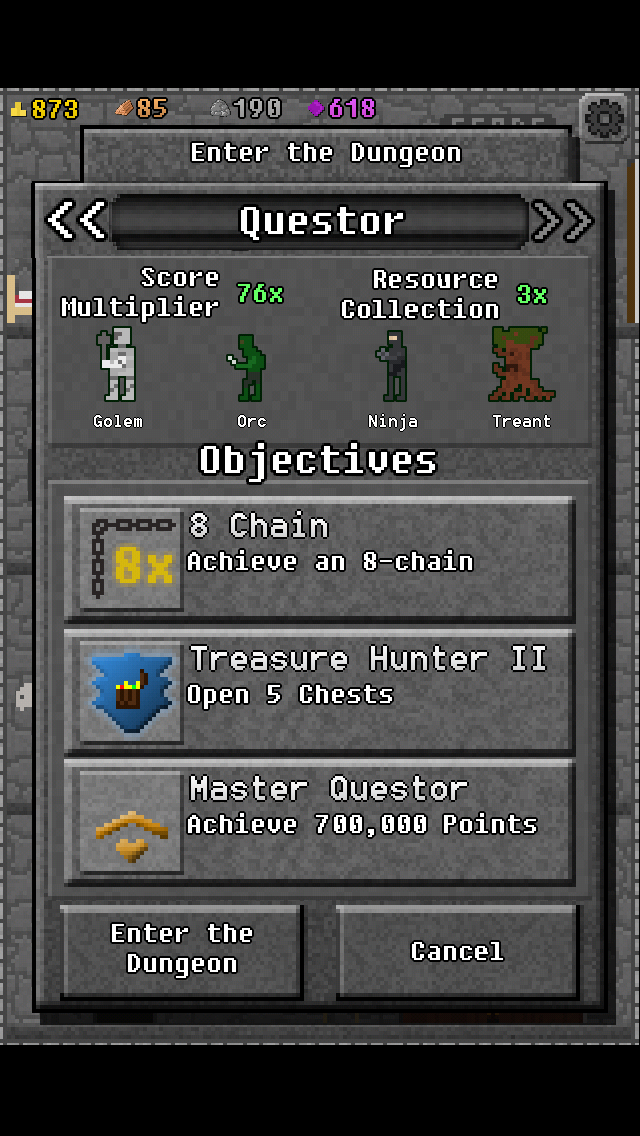
I mean, you can make an educated guess…a golem should be made of rock, right, so that probably counts as armored. Ninjas, seems unlikely they would wear armor. Orcs have thick skin I think, but does that count as armor? And what about tree bark? Maybe?
At the end of the day, it doesn’t make a big difference…you can always guess-and-check to figure out which one does the most damage. And at least for me, I’m taking the first match I see, regardless of type. But if the game is going to point out this difference (which it does), it would be nice if the player got at least a little better idea of what monsters count as armored and which don’t. Maybe a help page that categorizes them, or even a little icon/note that only appears on this pre-run overview screen. (or am I the only noob that doesn’t know the difference?)
Sometimes, Load Times are Good…
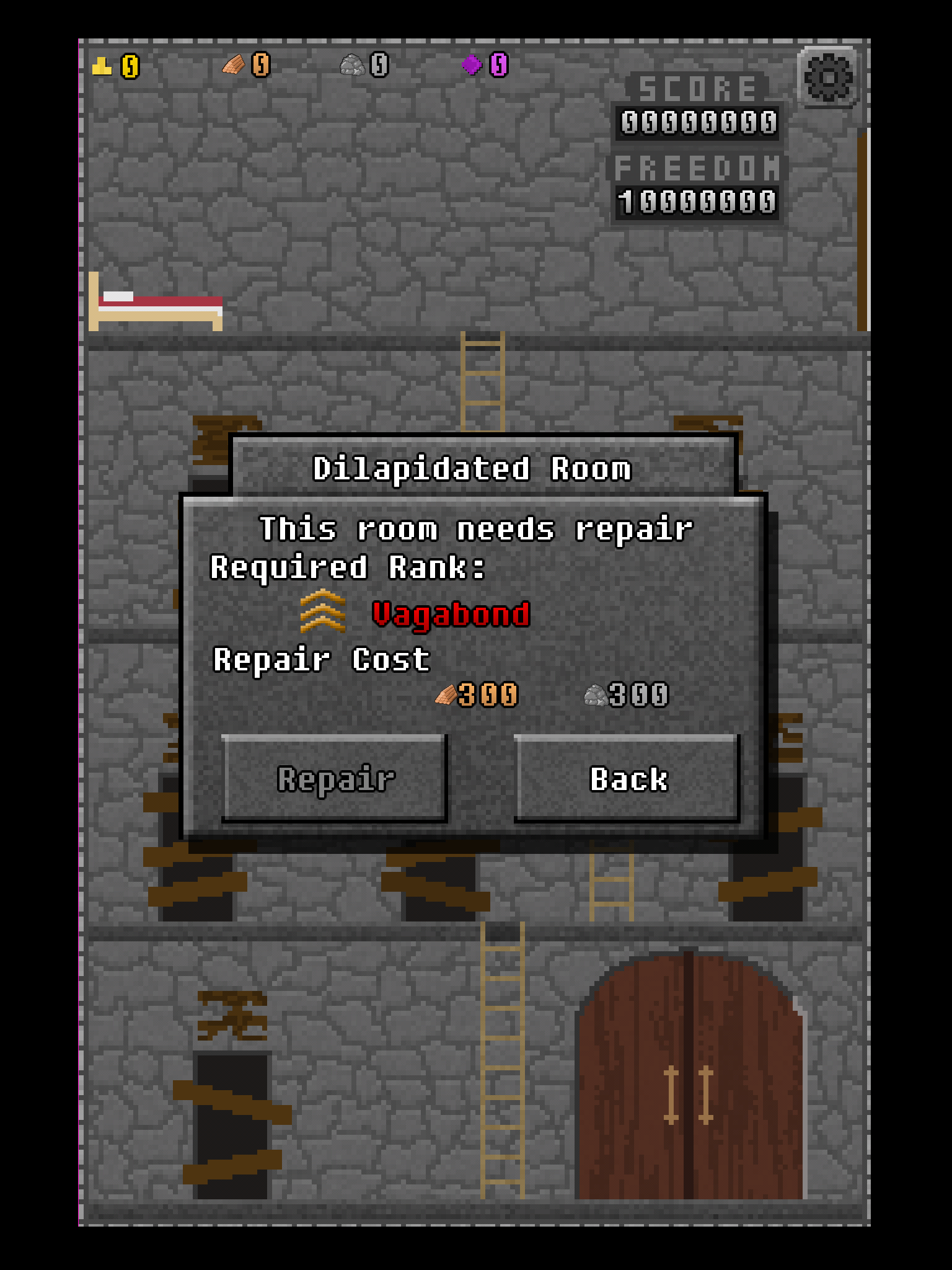
Once your hero has conquered a hallway (or technically, died trying I suppose), there are a few options for upgrading your weapons and armor among other things. But not right away…the various rooms must be repaired first before they are of use to you. Without knowing what any of the rooms are before sinking your resources into fixing them, it’s almost like mystery-meat navigation, although this is way more fun. As I repaired each of the rooms, I was genuinely excited to see what was behind each door. You can unlock all of the rooms relatively quickly, but it was a good example of gradually unlocking features.
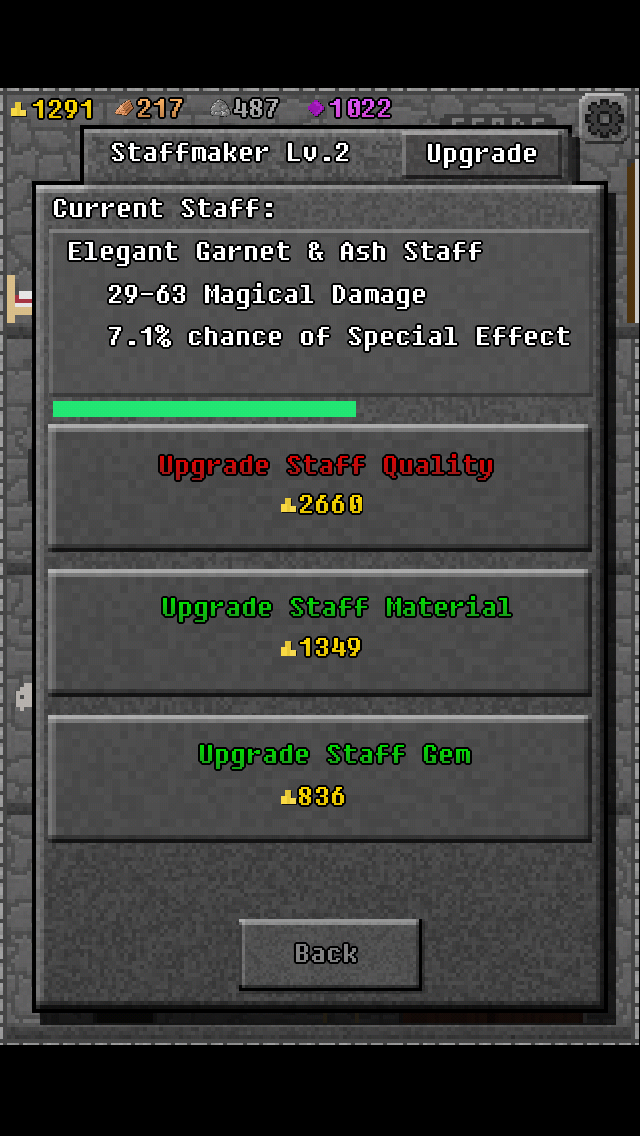
Anyway, once the rooms are unlocked, upgrading your hero’s gear is a straightforward operation. Interestingly though, upgrading an item displays a progress bar for a few seconds. Obviously there’s nothing really to load here, the delay is just for aesthetic reasons. And it works really well - it’s just long enough to feel satisfying when it’s complete, and not too long to make you angry about the wait.
See, unlike some earlier discussions on loading screens in Mass Effect 3, they aren’t all bad!
Conclusion
10000000 is a great example of a game that looks simple, but has some complex underpinnings. It’s rewarding in that you can play it for literally just a couple of minutes at a time, and yet still have a meaningful ongoing “campaign” that can last for a long time.
There’s a fine line to walk here - keeping the game simple and accessible, and yet not overly hand-holding players to the point where it isn’t fun anymore. Generally, 10000000 does pretty well with this, and while I might appreciate a little bit more information some of the time, the game is still quite addictive and a lot of fun.
Now if only there was some iCloud integration so I could continue my iPhone game on my iPad…
What do you think of 10000000? Drop me a line in the comments!
